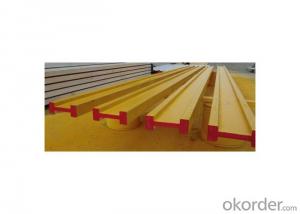Plywood Sheets – A Closer Look at Their Sizes and Uses
When it comes to home improvement, woodworking, or even crafting, plywood sheets are a go-to material for many. But what exactly are they, and how do you choose the right one for your project? Let’s dive into the world of plywood and explore its many facets.
What is Plywood?
Plywood is a versatile engineered wood product made from thin layers of wood veneer, known as plies, which are glued together under heat and pressure. Each layer is rotated 90 degrees relative to the adjacent layer, creating a strong and stable structure. This unique construction gives plywood its strength and resistance to warping.
The Layers of Plywood
The layers of plywood are referred to as ‘plies’. The grain of each ply runs perpendicular to the grain of the adjacent plies, which enhances the sheet’s dimensional stability and reduces the likelihood of warping. The outer layers, known as the face and back veneers, are usually made from high-quality wood species, while the inner layers can be made from a variety of woods.
Types of Plywood
There are several types of plywood, each with its own characteristics and uses. Some common types include:
– Baltic Birch Plywood: Known for its uniformity and strength, it’s often used for furniture and other applications where a high-quality finish is desired.
– Marine Plywood: As the name suggests, this type is used in marine applications due to its resistance to moisture and rot.
– Birch Plywood: Popular for its decorative qualities and strength, it’s a favorite among furniture makers and woodworkers.
– Oak Plywood: With its natural beauty and durability, oak plywood is often used for cabinetry and flooring.
Sizes of Plywood Sheets
Plywood comes in a variety of standard sizes, but the most common are:
– 4X8 feet
– 4X10 feet
– 5X5 feet
– 5X10 feet
These sizes can vary slightly depending on the region and the manufacturer. It’s always a good idea to check with your local supplier for the exact dimensions they offer.
Choosing the Right Plywood for Your Project
When selecting plywood for a project, consider the following factors:
– Thickness: Plywood sheets come in various thicknesses, typically ranging from 1/8 inch to 3/4 inch. The thickness you choose will depend on the structural requirements of your project.
– Grade: Plywood is graded based on the quality of the face veneer and the absence of defects. Higher grades have fewer defects and are suitable for projects where appearance is important.
– Application: Consider the specific use of the plywood in your project. For example, if you’re building a cabinet, you might want a plywood with a smooth surface and good screw-holding capabilities.
– Environment: If your project will be exposed to moisture, you’ll need a type of plywood that can withstand it, like marine plywood.
Uses of Plywood Sheets
Plywood is incredibly versatile and can be used in a wide range of applications, from construction to art. Here are some common uses:
– Furniture Making: Plywood is a popular choice for furniture due to its strength and the availability of various wood species.
– Cabinetry: It’s often used for the construction of cabinets, both for its durability and the ease of cutting and shaping.
– Flooring: Some types of plywood are suitable for use as subflooring or even as the finished floor in certain applications.
– Walls and Ceilings: Plywood can be used for sheathing in walls and ceilings, providing a stable base for other materials.
– Art and Crafts: Many artists and crafters use plywood for its uniform thickness and availability in large sheets.
– DIY Projects: From simple shelves to complex structures, plywood is a staple in many DIY projects.
Working with Plywood
Working with plywood can be a rewarding experience, but it does require some knowledge and skill. Here are a few tips:
– Cutting: Use sharp blades and proper safety equipment when cutting plywood to avoid chipping the edges.
– Sanding: Plywood surfaces can be sanded smooth, but be aware that some types of plywood may have voids or gaps between the layers that can catch sandpaper.
– Finishing: Depending on the type of plywood and the desired finish, you may need to apply a wood filler or use a specific type of paint or stain.
– Joining: Plywood sheets can be joined using a variety of methods, including screws, nails, dowels, or wood glue.
Sustainability of Plywood
Plywood is considered a sustainable building material because it’s made from layers of wood veneer, which uses less wood than solid wood products. Additionally, the manufacturing process can utilize smaller or lower-grade logs that might otherwise be wasted.
Conclusion
Plywood sheets are an essential material for a wide range of projects. With their strength, versatility, and sustainability, they offer a practical and environmentally friendly option for many applications. Whether you’re a professional woodworker or a DIY enthusiast, understanding the different types, sizes, and uses of plywood can help you make the best choice for your next project.

